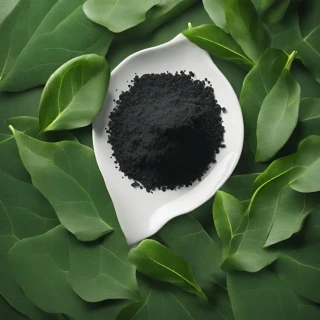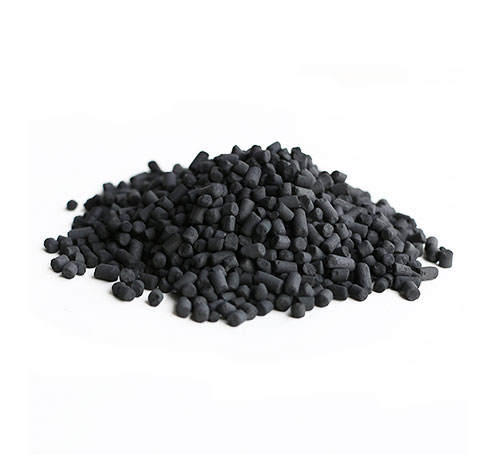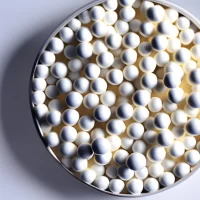Activated Carbon, commonly known as Activated Charcoal, is an essential porous material utilized across various industries like water treatment, air purification, and medical applications due to its outstanding adsorption capabilities.
In 2025, Granular Activated Carbon remains a preferred form for water filtration, widely used to remove impurities. As industries continue to rely on Activated Carbon and Activated Charcoal adsorption power, their demand grows, especially in environmental protection and health sectors, driving innovation in their applications.

Contents
- 1 What Is Activated Carbon?
- 2 The History of Activated Carbon
- 3 Applications of Activated Carbon
- 4 Market Trends and Growth of Activated Carbon
- 5 Is Activated Carbon The Same As Activated Charcoal?
- 6 What Is Activated Carbon Used For?
- 7 How Does Activated Carbon Work?
- 8 How To Make Activated Carbon?
- 9 What Does Activated Carbon Remove From Water?
- 10 Conclusion
What Is Activated Carbon?
Activated Carbon is a modified type of Carbon with an extensive surface area and a highly porous structure, making it an excellent adsorbent. It originates from natural substances like coconut husks, timber, peat, and coal through a controlled activation process. One of the most commonly used forms is Granular Activated Carbon (GAC), which is particularly effective in water and air filtration systems.
The two main types of Activated Carbon include:
- Granular Activated Carbon (GAC): Used for water purification, air filtration, and industrial processes.
- Powdered Activated Carbon (PAC): Often applied in medical treatments, food processing, and wastewater treatment.
The History of Activated Carbon
The use of Activated Carbon dates back over 2,000 years. Ancient Egyptians and Hindus utilized Activated Charcoal for water purification, and early civilizations in Greece and Rome used it for medicinal applications.
Key Historical Milestones:
- 19th Century: Industrial applications expanded, particularly in sugar refining.
- World War I: Activated Carbon was used in gas masks for protection against chemical warfare.
- 20th Century: The adoption of municipal water treatment and air purification grew significantly.
- 21st Century: Modern applications now include environmental sustainability and advanced industrial uses.
Applications of Activated Carbon
The use of Activated Carbon dates back over 2,000 years. Ancient Egyptians and Hindus utilized Activated Charcoal for water purification, and early civilizations in Greece and Rome used it for medicinal applications.
1. Water Purification
A significant application of Activated Carbon is in water treatment. Granular Activated Carbon is particularly effective in removing:
- Chlorine
- Pesticides
- Volatile Organic Compounds (VOCs)
- Heavy metals such as mercury and lead
The increasing demand for safe drinking water, with over 2 billion people worldwide lacking clean water access, has driven the rapid growth of Activated Carbon filtration systems.
2. Air and Gas Filtration
Activated Carbon is commonly utilized in air purification systems to eliminate contaminants like:
- Industrial emissions (e.g., sulfur dioxide, nitrogen oxides)
- Volatile Organic Compounds (VOCs)
- Unpleasant odors and harmful gases
With urban air pollution rising, Granular Activated Carbon filters are becoming a key component in residential, commercial, and industrial air treatment solutions.
3. Medical and Pharmaceutical Applications
Activated charcoal is utilized in the medical field for the treatment of:
- Poisoning and drug overdoses
- Gastrointestinal disorders
- Kidney disease (reducing urea levels)
Studies show that Activated Charcoal can absorb 50-60% of toxins within the first hour, making it a crucial emergency treatment.
4. Industrial and Environmental Uses
- Gold Extraction:
Activated Carbon serves to retrieve gold from its ore. - Food and Beverage Industry:
Used in sugar refining and beverage purification. - Waste Management:
Helps in industrial wastewater treatment and chemical recovery. - Energy Storage:
Research is exploring its use in supercapacitors and batteries for efficient energy storage.
Market Trends and Growth of Activated Carbon
The global Activated Carbon market is expanding rapidly due to rising environmental concerns and industrial demand.
Latest Market Statistics (2024-2032)
- Market Value (2024):
USD 5.21 billion - Projected Market Value (2032):
USD 8.54 billion - CAGR (2024-2032):
5.7%
Factors Driving Market Growth
✔️ Strict Environmental Regulations:
Governments worldwide enforce stringent pollution control laws, boosting demand for Activated Carbon.
✔️ Industrial Growth in Asia-Pacific:
Countries like China and India are leading in water and air purification investments.
✔️ Technological Innovations:
Advances in Granular Activated Carbon production are enhancing efficiency.
✔️ Health Awareness:
Growing demand for air and water filtration systems fuels market expansion.
Regional Market Insights
- North America:
Leading market share due to intense regulatory policies. - Asia-Pacific:
The fastest-growing region, particularly China and India. - Europe:
Focus on sustainability and pollution control, which are driving demand.
Is Activated Carbon The Same As Activated Charcoal?
The Phrases "activated carbon" and "activated charcoal" are often used interchangeably, leading to confusion regarding whether they refer to the same substance.
In essence, they do indeed describe the same material. Still, there can be subtle differences in their usage based on regional preferences and contexts.
The choice between "carbon" or "charcoal" often depends on regional conventions. In the United States, "activated charcoal" is the more commonly used term.
In contrast, "activated carbon" may be preferred in other parts of the world, especially in scientific and industrial contexts.
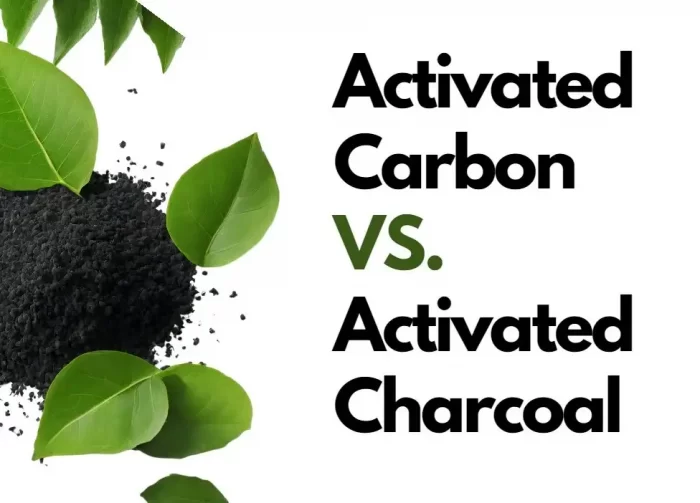
What Is Activated Carbon Used For?
Activated Carbon`s versatility extends to various applications across multiple sectors, making it a key component in ensuring cleaner, safer environments.
Here's a closer look at the diverse uses of activated carbon:
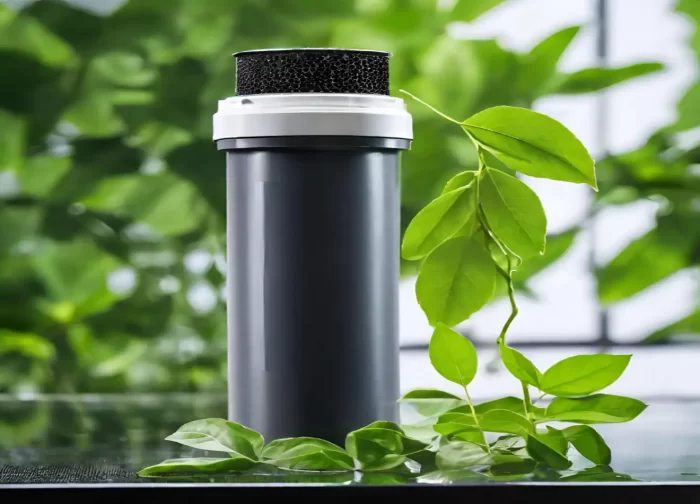
How Does Activated Carbon Work?
Activated carbon is a unique material with exceptional adsorption properties. It is produced by heating organic materials, like coconut shells or wood, to high temperatures. This activation process creates countless microscopic pores on the carbon's surface, providing an extensive area for trapping and binding impurities.
Here is a detailed explanation of the adsorption process of activated carbon:
1. High Surface Area
Activated carbon is characterized by an exceptionally high surface area, which is a result of its porous structure. This porous structure provides an extensive internal surface that is available for adsorption. The surface area can range from several hundred to over 2,000 square meters per gram, depending on the source material and activation method.
2. Pore Structure
Activated carbon typically consists of different types of pores, including micropores (very small), mesopores (medium-sized), and macropores (larger). The different pore sizes play a significant role in the adsorption process. Micropores are especially effective at adsorbing small molecules and gases, while mesopores and macropores are more suited for larger molecules.
3. Contaminant Contact
The contaminated fluid or gas is brought into contact with the activated carbon. The contaminants present in the fluid or gas come into proximity with the activated carbon's surface.
4. Adsorption Mechanisms
a. Van der Waals Forces:
The primary mechanism responsible for adsorption on activated carbon is Van der Waals forces. These are weak attractive forces that occur between molecules. The carbon surface, being composed of carbon atoms, has a high affinity for other carbon-containing compounds and non-polar molecules. Van der Waals forces attract these molecules to the carbon surface.
b. Electrostatic Interactions:
In some cases, activated carbon surfaces may be charged due to chemical treatments during activation. Charged surfaces can attract and hold oppositely charged ions and polar molecules through electrostatic interactions.
5. Selective Adsorption
Activated carbon exhibits some level of selectivity in adsorbing contaminants. Its ability to selectively capture certain compounds is influenced by the activated carbon's surface chemistry and the nature of the contaminants. This selectivity allows it to target specific pollutants while sparing other components in the fluid or gas.
6. Saturation
As the activated carbon continues to adsorb contaminants, its adsorption sites may become saturated. This means that the available surface area and pores are filled with contaminants, and the carbon's adsorption capacity is reduced.
7. Regeneration
In some applications, such as water treatment, activated carbon can be regenerated to restore its adsorption capacity. Regeneration methods can include thermal regeneration (exposing the carbon to high temperatures to desorb contaminants) or chemical regeneration (using chemicals to desorb contaminants).
8. Disposal
When activated carbon is no longer effective or cannot be regenerated, it needs to be properly disposed of in accordance with environmental regulations, as it may contain concentrated contaminants.
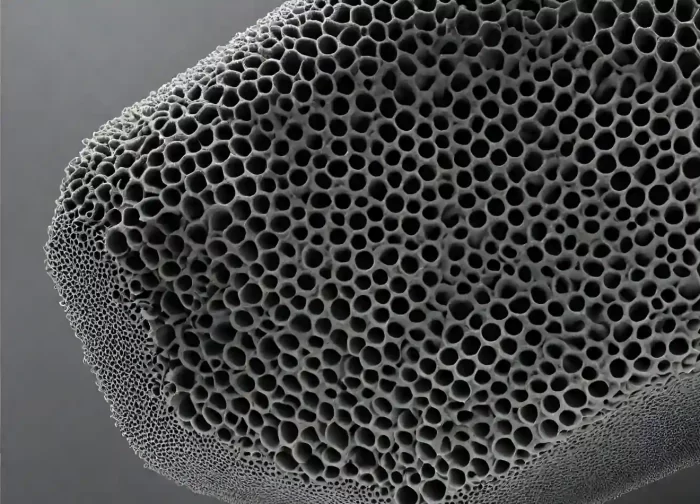
How To Make Activated Carbon?
In this guide, we'll walk you through the steps to make activated carbon, exploring both physical and chemical activation methods.
I. Choosing the Right Source Material
The first step in making activated carbon is selecting the appropriate source material. Common choices include coconut shells, wood, peat, sawdust, and agricultural residues. The choice of source material can influence the characteristics of the final product, such as its pore structure and adsorption capacity.
II. Physical Activation: The Steam and Heat Approach
Carbonization:
After selecting the source material, it is heated in the absence of air in a process known as carbonization. This step transforms the source material into char and usually occurs at temperatures ranging from 600 to 900°C.
Activation:
The carbonized material is then subjected to high temperatures in the presence of an activating agent, often steam or carbon dioxide (CO2). This activation process causes the carbon structure to expand, creating a highly porous structure with a large surface area.
Cooling and Washing:
Following activation, the material is cooled and washed to remove any impurities and residual activating agents.
Drying:
The activated carbon is then dried to reduce its moisture content, making it ready for use.
Sizing and Packaging:
The final activated carbon is typically crushed, screened, and milled to achieve the desired particle size distribution. It is then packaged for various applications.
III. Chemical Activation: The Impregnation Method
Impregnation:
In chemical activation, the source material is impregnated with a chemical activating agent. Common activating agents include potassium hydroxide (KOH) or phosphoric acid (H3PO4).
Drying:
The impregnated material is dried to eliminate excess moisture.
Activation:
The impregnated material is heated at controlled temperatures, lower than in physical activation, creating a highly porous structure in the carbon.
Cooling and Washing:
After activation, the material is cooled and washed to remove impurities and excess activating agents.
Drying, Sizing, and Packaging:
Similar to physical activation, the final product is dried, sized, and packaged as needed for specific applications.

What Does Activated Carbon Remove From Water?
In this article, we will explore the capabilities of activated carbon filters and answer the question: What does activated carbon remove from water?
1. Organic Compounds
Activated carbon excels at removing organic compounds from water. These include substances like:
Volatile Organic Compounds (VOCs):
Activated carbon effectively captures VOCs, which can give water an unpleasant taste or odor. VOCs are often found in industrial and urban areas and can be harmful to health.
Pesticides and Herbicides:
Agricultural run-off and contaminated groundwater can introduce pesticides and herbicides into drinking water. Activated carbon can significantly reduce their presence.
Pharmaceutical Residues:
Pharmaceuticals like antibiotics and hormones can find their way into water sources. Activated carbon can adsorb these substances and prevent them from entering your drinking water.
2. Chlorine and Chlorination By-Products
Municipal water treatment facilities commonly use chlorine to disinfect water. While chlorine is crucial for killing harmful bacteria, its taste and odor can be less than desirable. Activated carbon steps in to remove both chlorine and its by-products, ensuring your tap water tastes and smells better.
3. Taste and Odor Compounds
Activated carbon also works wonders in eliminating taste and odor issues in your water. It can remove compounds responsible for earthy, musty, or metallic tastes, making your water more palatable.
4. Heavy Metals
Activated carbon's porous structure allows it to capture heavy metals like lead, mercury, and cadmium. These metals can seep into water supplies from industrial discharges or old plumbing systems. By adsorbing heavy metals, activated carbon helps protect your health.
5. Disinfection By-Products
The chlorine used to disinfect water can react with organic matter, forming disinfection by-products (DBPs). These DBPs are a health concern and can be effectively reduced by activated carbon filtration.
6. Bacteria and Microorganisms
While activated carbon mainly focuses on adsorption, it can also trap and remove some bacteria and microorganisms. However, it's important to note that other water treatment methods, like UV sterilization or chlorination, are more effective for disinfection.
Conclusion
In 2025, activated carbon will remain a vital material in modern industries, with increasing demand for water purification, air filtration, and environmental sustainability.
As Activated Charcoal continues to play a critical role, future carbon-based energy storage and industrial filtration advancements are expected to drive further market expansion for Granular Activated Carbon and its derivatives, emphasizing their growing importance across various sectors.
